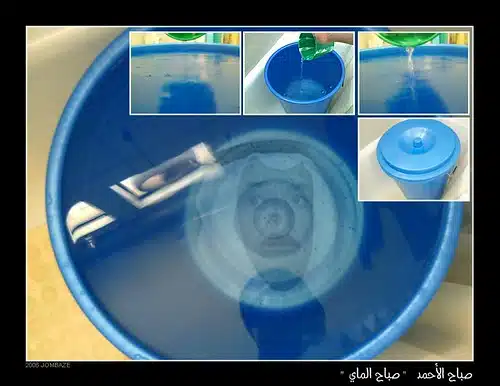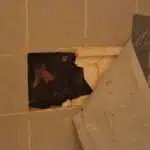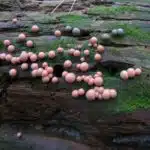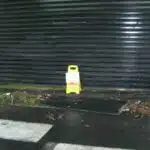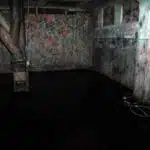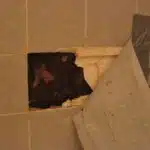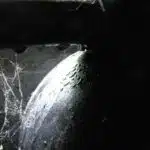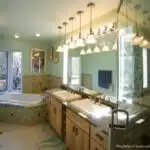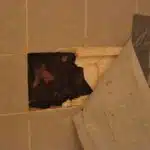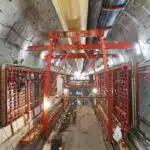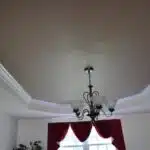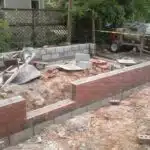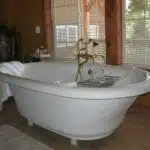As a crawl space waterproofing expert, I have seen countless instances where homeowners have neglected water issues in their crawl spaces. Water problems in the crawl space can lead to structural damage, mold growth, and even health problems for those living in the home. It is imperative that homeowners address these issues as soon as possible to prevent further damage and potential hazards.
In this article, we will explore the common water problems that can occur in crawl spaces and how to fix them. From identifying the source of water intrusion to implementing effective solutions, we will provide you with the knowledge and tools necessary to take action and protect your home from water damage. Whether you are a homeowner experiencing issues or a concerned individual wanting to help others, this article will serve as a comprehensive guide on how to fix water problems in the crawl space.
Common Causes Of Water Intrusion In Crawl Spaces
As a crawl space waterproofing expert, I have come across numerous cases of water intrusion in crawl spaces. Water intrusion is a common problem that can cause significant damage to your home if left unattended. If you are experiencing water problems in your crawl space, it is essential to understand the common causes of this issue.
One of the most common causes of water intrusion in crawl spaces is poor waterproofing methods during construction. The materials used during the building process may not have been adequately sealed, leading to water seeping into the crawl space. Additionally, inadequate exterior drainage systems can cause water to accumulate around the foundation walls and eventually find its way into the crawl space.
DIY solutions such as using sealants or installing sump pumps may provide temporary relief but do not address the underlying problem effectively. In some cases, these DIY solutions may even exacerbate the problem by trapping moisture and creating breeding grounds for mold and mildew. It is crucial to enlist professional help to identify and address any underlying issues causing water intrusion in your crawl space.
Moving forward, it is essential to know how to identify signs of water problems in your crawl space so that you can take prompt action before significant damage occurs.
Signs Of Water Problems In The Crawl Space
Assessing the damage caused by water intrusion in your crawl space is essential to ensure effective and long-lasting solutions. The first step is to identify where the water is coming from and how it’s getting into your crawl space. This could be due to poor drainage, faulty plumbing, or leaks in the foundation walls.
Once you’ve identified the source of the problem, it’s crucial to take preventive measures to prevent further damage. One effective way to do this is by installing a vapor barrier on the ground surface and walls of your crawl space. This will reduce moisture levels and prevent mold growth. Additionally, ensuring proper ventilation in your crawl space can also help remove excess moisture and prevent water intrusion.
Prevention tips are not enough if you’re already dealing with water problems in your crawl space. If you notice signs of water damage such as musty odors, mold growth, or buckling floors, it’s crucial to address these issues immediately. Ignoring them can lead to structural damage and health hazards for you and your family. Contacting a professional waterproofing contractor can help assess the extent of the damage and provide effective solutions tailored to your specific needs.
The importance of addressing water issues in the crawl space cannot be overstated. Water intrusion can cause serious structural damage as well as health risks for you and your family. Taking preventive measures such as installing a vapor barrier or improving ventilation can minimize the chances of water intrusion. However, if you’re already experiencing water problems, seeking professional assistance is vital for long-term solutions that will protect your home from further damage.
The Importance Of Addressing Water Issues In The Crawl Space
There is a common misconception among homeowners that the crawl space is an unimportant area of their home. However, this could not be farther from the truth, as it plays a vital role in maintaining the structural integrity of your house. Water intrusion in the crawl space can lead to numerous problems, such as mold growth, wood rot, and even foundation damage.
As a crawl space waterproofing expert, I cannot stress enough the importance of addressing water issues in this area of your home. Here are three benefits of waterproofing your crawl space:
- Improved air quality: Excess moisture in the crawl space can lead to mold growth and other allergens that affect air quality throughout your home.
- Energy efficiency: A damp and humid crawl space can make it harder for your HVAC system to keep up, leading to higher energy bills.
- Increased home value: Waterproofing your crawl space not only protects your investment but also increases its resale value.
While there are DIY solutions for water intrusion in the crawl space, it’s best to consult with a professional who has experience dealing with these issues. They can offer long-term solutions tailored to your specific needs and ensure that you avoid any potential hazards associated with improper waterproofing.
Moving forward from addressing water issues in the crawl space, conducting a thorough inspection is crucial to identifying any underlying problems that may have gone unnoticed.
Conducting A Crawl Space Inspection
Benefits of conducting a crawl space inspection are numerous. For starters, it can help identify water problems and other issues that could potentially cause damage to the foundation or lead to structural problems. Additionally, inspecting your crawl space regularly can help you catch any issues before they become serious and costly to repair.
DIY methods for conducting a crawl space inspection typically involve visually examining the crawl space for signs of water intrusion, such as moisture, mold growth, or water stains. You may also want to look for any visible cracks or gaps in the foundation walls or floor that could be allowing water to enter. It’s important to wear protective gear and take safety precautions when inspecting your crawl space, as it can be a hazardous environment.
In summary, conducting a crawl space inspection is an essential part of maintaining the health and integrity of your home’s foundation. By identifying potential issues early on and taking action to address them, you can save yourself time, money, and stress in the long run. The next step in waterproofing your crawl space is identifying the source of any water intrusion so that it can be properly addressed and prevented from happening again in the future.
Identifying The Source Of Water Intrusion
After conducting a thorough crawl space inspection, it’s not uncommon to find water problems. Water intrusion can come from many sources such as heavy rain, improper grading, or plumbing issues. The best way to fix this issue is to identify the source of the problem and assess its severity.
Assessing the severity of water intrusion in your crawl space is important before deciding whether you should hire a professional or tackle the problem yourself. If there are just small amounts of moisture that need to be dealt with, then DIY solutions may be viable. However, if there are visible mold growth and standing water, it’s best to call in a professional waterproofing company.
When it comes to fixing water problems in your crawl space, repairing foundation cracks and leaks is a crucial step. These cracks can allow groundwater to seep into your crawl space causing severe damage over time. Foundation cracks can be caused by several factors such as soil movement or settling of the house. A professional waterproofing company will be able to assess the cause of your foundation cracks and provide an appropriate solution.
Repairing Foundation Cracks And Leaks
Foundation repair techniques are essential for fixing water problems in the crawl space. Foundation cracks and leaks can cause significant damage to a building’s foundation if left untreated. The first step is to identify the source of the problem, which may be caused by poor drainage, soil erosion, or inadequate waterproofing.
DIY repairs may seem like a cost-effective solution, but they often require specialized equipment and knowledge that most homeowners don’t have. Professional repairs can be more expensive upfront, but they offer long-term solutions that save money in the long run. A professional waterproofing contractor can assess the severity of the problem and recommend a customized solution based on your specific needs.
If you decide to hire a professional for foundation repair, it’s important to choose a reputable contractor with experience in crawl space waterproofing. Look for certifications and qualifications such as membership in industry associations and licenses. Be wary of contractors who offer quick fixes or use substandard materials. A reputable contractor will provide you with a detailed estimate and explain each step of the repair process.
Transition: Now that you have addressed foundation repair techniques, it’s time to consider another essential aspect of crawl space waterproofing – installing a vapor barrier.
Installing A Vapor Barrier
- Choosing the right vapor barrier is essential in order to ensure that the crawl space water issues are properly addressed.
- It is important to consider the size and material of the vapor barrier to ensure that it is suitable for the climate and the specific water issue.
- Installing the vapor barrier correctly is essential in order to ensure that it is properly sealed and waterproofed.
- It is important to consider the space available, the thickness of the barrier, and the type of adhesive used when installing the vapor barrier.
Choosing A Vapor Barrier
Choosing the right vapor barrier is a crucial aspect of crawl space waterproofing. A high-quality vapor barrier installation can significantly reduce moisture buildup in the crawl space, which can cause structural damage and health problems. When selecting a vapor barrier, it is essential to consider factors such as thickness, material, and permeability.
The thickness of the vapor barrier is an essential factor to consider during installation. A thicker barrier will provide better insulation and prevent moisture from entering the crawl space. However, it’s important to ensure that the thickness does not compromise the ventilation system of the home. The material used for the vapor barrier should also be considered since some materials are more durable than others. Polyethylene sheets are commonly used for moisture prevention measures due to their strength and flexibility.
Permeability is another factor to consider when choosing a vapor barrier. A highly-permeable membrane allows air to flow through easily but can still prevent water from passing through. This feature ensures that there is proper circulation in the crawl space while preventing mold growth and other moisture-related issues. An experienced crawl space waterproofing expert can help homeowners select a suitable vapor barrier that meets these requirements.
In conclusion, installing a high-quality vapor barrier is an effective way to protect your home from water problems in the crawl space. Choosing the right type of material involves considering factors such as thickness and permeability. Working with experienced professionals who understand moisture prevention measures can help ensure successful installation and long-term protection against moisture-related issues.
Installing The Vapor Barrier
When it comes to crawl space waterproofing, installing a vapor barrier is an essential step in preventing moisture buildup. The installation process involves carefully selecting the right materials and determining whether to hire professionals or attempt a DIY installation. The cost of materials and labor can vary, making it important to consider all factors before beginning the installation.
Choosing the right materials for vapor barrier installation is crucial. Polyethylene sheets are commonly used due to their durability and flexibility. However, other materials such as foil-faced insulation or spray foam may also be suitable depending on the specific needs of the crawl space. The cost of materials varies depending on the chosen material and thickness required for proper insulation. It’s important to note that while DIY installation may seem like a viable option, hiring professionals can ensure correct installation and long-term protection against moisture-related issues.
When considering vapor barrier installation, homeowners must decide between attempting a DIY project or hiring professionals. While a DIY approach may seem more cost-effective initially, professional installation can provide peace of mind knowing that the job was done correctly. Additionally, professionals have access to specialized tools and equipment that can make the process smoother and easier. Ultimately, it’s up to homeowners to evaluate their skill level and weigh the costs versus benefits of each approach before making a decision on how to proceed with installing a vapor barrier in their crawl space.
Improving Drainage Systems
Water problems in the crawl space can be caused by a variety of issues, including poor drainage systems. If your crawl space is experiencing water accumulation, it’s essential to address the root cause of the problem promptly. One way to improve drainage is by grading the area around the foundation. This involves sloping the soil away from your home to prevent rainwater from pooling near the foundation. Additionally, gutters and downspouts should be installed to divert water away from your home’s foundation.
Another method of improving drainage in crawl spaces is through French drains. A French drain consists of a perforated pipe surrounded by gravel that is buried underground around the perimeter of your home’s foundation. The drain works by capturing water and directing it away from your crawl space before it can seep inside. Sump pumps are also an effective solution for homes with water problems in their crawl spaces. These devices work by pumping out any water that accumulates in the sump pit located in your crawl space.
By improving your home’s drainage systems, you can prevent or reduce water accumulation in your crawl space significantly. However, if you’ve already experienced damage due to excess moisture, it’s important to take action quickly. In our next section, we’ll explore how repairing or replacing damaged crawl space insulation can help mitigate future moisture problems and protect your home from further damage.
Repairing Or Replacing Damaged Crawl Space Insulation
Improving the drainage system is a crucial first step in fixing water problems in the crawl space. A poorly functioning drainage system can lead to water accumulation, which can cause damage to the foundation and support beams of your home. Installing proper drainage systems like French drains or sump pumps can help manage excess water, preventing it from seeping into your crawl space.
Once drainage issues have been addressed, it’s essential to consider insulation as an additional line of defense against moisture. There are two primary types of insulation for crawl spaces: closed-cell spray foam and rigid foam board insulation. Closed-cell spray foam is typically more expensive but provides superior insulation and an air barrier that helps prevent moisture infiltration. Rigid foam board insulation is less expensive but more challenging to install correctly.
While some homeowners may opt for a DIY approach when it comes to installing crawl space insulation, it’s crucial to consider the benefits of professional installation. Professional contractors have experience working with different types of insulation materials and know how to install them properly for maximum effectiveness. They also have access to specialized equipment that allows them to perform work safely and efficiently, reducing the risk of injury or damage to your home.
Moving forward, dealing with mold and mildew in the crawl space requires attention to detail and careful planning. Moisture control measures such as sealing cracks and using dehumidifiers can help prevent mold growth. If mold has already taken hold, professional remediation services may be necessary. By addressing these issues head-on, you can ensure a safe and healthy living environment for you and your family.
Dealing With Mold And Mildew
- Mold and mildew can be identified by presence of musty odors, discoloration or staining of surfaces, and visible growth.
- Removal of mold and mildew includes thorough cleaning of affected areas with detergent or chlorine bleach solution and discarding of porous materials.
- To prevent future occurrences of mold and mildew, it is important to maintain a healthy humidity level and proper ventilation in the crawl space.
- Additionally, it is important to detect and address any water intrusion issues in the crawl space.
- Crawl space waterproofing measures such as exterior drainage systems, sump pumps, and interior drainage systems can be implemented to manage moisture levels in the crawl space.
- Finally, periodic inspections of the crawl space should be conducted to ensure that all the preventive measures are effective.
Identifying Mold And Mildew
Mold and mildew are common culprits in crawl space water problems. Identifying sources of the moisture is crucial to preventing their growth. These fungi thrive in damp, dark environments, so it’s important to check for any leaks or standing water that may be present. Look for signs of condensation on pipes or walls as well as any visible mold growth.
Once you have identified the source of the moisture, prevention techniques can be implemented. One effective method is to install a vapor barrier to prevent moisture from seeping through the ground and into the crawl space. Proper ventilation is also key – ensuring that there is enough air flow will help to reduce humidity levels. Additionally, fixing any leaks or drainage issues outside the home can greatly reduce the amount of moisture that enters the crawl space.
If mold or mildew is found in your crawl space, it’s important to address it immediately. Left unchecked, these fungi can cause serious health issues and structural damage over time. A professional waterproofing team can assess the extent of the problem and provide solutions tailored to your specific needs. By identifying sources of moisture and implementing prevention techniques, you can ensure a healthy living environment for you and your family.
Removing Mold And Mildew
Now that we have discussed the prevention of mold and mildew in your crawl space, let’s move on to the next step – removing any existing growth. Mold and mildew can not only damage your home’s structure but also impact the health of those living inside. Therefore, it is essential to address this issue as soon as possible.
Removing mold and mildew involves more than just wiping away visible growth. It is crucial to identify the source of moisture that allowed them to grow in the first place. Once this has been addressed, a professional waterproofing team can thoroughly clean and disinfect the area using specialized tools and products. They will also take measures to prevent regrowth by installing ventilation systems or dehumidifiers.
Preventing regrowth is just as crucial as removing existing mold and mildew. A waterproofing expert will advise you on proper maintenance techniques such as regular inspections, controlling humidity levels, and repairs of any leaks or drainage issues. By taking these steps, you can ensure a healthy living environment for you and your family while protecting your home from costly structural damage caused by mold and mildew growth.
Preventing Future Mold And Mildew
Preventing future mold and mildew growth is just as critical as removing existing ones from your crawl space. While DIY methods may seem like a cost-effective solution, hiring a professional waterproofing team is the better option. They have the experience, expertise, and specialized equipment necessary to ensure thorough cleaning and disinfecting of the area. Additionally, they can identify any underlying issues that may cause moisture buildup in your crawl space.
Humidity control is crucial for preventing mold and mildew growth in your crawl space. One effective way to control humidity levels is by installing a dehumidifier. This device will regulate moisture levels, preventing them from reaching levels that promote mold and mildew growth. Proper ventilation is also essential for maintaining optimal humidity levels. A professional waterproofing team can install an efficient ventilation system to help prevent future mold and mildew growth.
Regular inspections are essential for preventing mold and mildew growth in your crawl space. A professional waterproofing team can perform regular inspections to check for any signs of moisture buildup or other issues that could lead to mold and mildew growth. Additionally, they can advise you on proper maintenance techniques such as controlling humidity levels, repairing leaks or drainage issues promptly, and ensuring proper airflow through your crawl space. By taking these steps, you can ensure a healthy living environment for you and your family while protecting your home from costly structural damage caused by mold and mildew growth.
Maintaining Proper Ventilation
Effective moisture control in crawl spaces is crucial for preserving the structural integrity of a building. A poorly ventilated crawl space can lead to mold growth, wood rot, and even pest infestations. To illustrate, consider an example where a homeowner discovered mold on the wooden beams of their crawl space. Upon inspection by a professional waterproofing company, it was found that there was inadequate ventilation in the area. The experts recommended maintaining proper ventilation and humidity control as a preventative measure against future mold growth.
To maintain proper ventilation in your crawl space, there are several steps you can take. Firstly, ensure that all vents leading into the crawl space are clear and free from any obstruction such as debris or overgrown vegetation. Secondly, install vent fans that can help to improve air circulation within the crawl space. Thirdly, make sure that the humidity levels in your home are within acceptable limits to prevent moisture build-up.
Humidity control is another critical factor when it comes to maintaining good indoor air quality and preventing moisture damage in your crawl space. To achieve this, homeowners should invest in dehumidifiers that help to remove excess moisture from the air. Additionally, installing vapor barriers can also help to reduce humidity levels by preventing moisture from penetrating through walls and floors into the crawl space. By following these simple steps for ventilation maintenance and humidity control, homeowners can effectively protect their homes from potential water problems in their crawl spaces.
Moving forward with addressing water problems in your crawl space may require more than just DIY measures; hiring a professional for waterproofing services may be necessary to identify underlying issues that need addressing like cracks or holes causing water seepage into the area. In addition to identifying problematic areas, professionals have specialized equipment designed specifically for fixing these types of issues permanently – ensuring peace of mind knowing that your home is protected against future water damage concerns.
Hiring A Professional For Crawl Space Waterproofing
Hiring a professional for crawl space waterproofing is a wise decision for homeowners who are experiencing water problems in their crawl space. The benefits of hiring professionals to waterproof your crawl space are numerous. Professionals have the experience, equipment, and skills necessary to identify and fix water problems in your crawl space effectively.
One of the most significant benefits of hiring professionals for crawl space waterproofing is cost-effectiveness. While DIY solutions may seem cheaper at first glance, they can end up costing you more in the long run if not done correctly. Professionals have access to high-quality materials and techniques that will ensure that your crawl space stays dry for years to come.
Overall, hiring a professional for crawl space waterproofing is an investment that will pay off in the long run. Not only will it save you money, but it will also give you peace of mind knowing that your home is protected from water damage. In the next section, we will discuss preventative measures that homeowners can take to avoid future water problems in their crawl space.
Preventative Measures To Avoid Future Water Problems
- Regularly inspecting gutters on the roof of the home is a crucial preventative measure to avoid future water problems in the crawl space.
- Installing a drainage system around the perimeter of the home can help divert water away from the foundation and into the yard.
- Sealing any cracks in the foundation can prevent water from seeping into the crawl space, which can lead to costly repair or replacement of insulation or other materials in the crawl space.
- Establishing proper drainage away from the foundation is another important preventative measure that can help minimize the risk of water damage in the crawl space.
- Regularly checking the home’s gutters, downspouts and drains for any blockages or clogs can help ensure that water is diverted away from the foundation and into the yard.
- If a homeowner is uncertain about the condition of the home’s foundation or drainage system, a professional crawl space waterproofing expert can inspect the area and recommend any necessary repairs or preventive measures.
Inspect Gutters
As a crawl space waterproofing expert, I understand the importance of inspecting gutters to prevent future water problems. Gutters are responsible for directing rainwater away from your home’s foundation and crawl space. If gutters are not functioning correctly, water can easily accumulate in the surrounding soil and infiltrate your crawl space. Therefore, it is essential to routinely inspect gutters to ensure they are in good working condition.
Inspecting gutters involves checking for any signs of damage or wear and tear. Cracks or holes in the gutter system can cause water to leak out and accumulate around your home’s foundation, leading to moisture buildup in the crawl space. Additionally, cleaning gutters is crucial as debris such as leaves and twigs can accumulate inside gutters and block the flow of water. This blockage can cause overflow during heavy rainfall, which may result in water intrusion into your crawl space.
In conclusion, inspecting gutters is an imperative preventive measure that should be taken regularly to avoid future water problems in the crawl space. Cleaning debris such as leaves and twigs from gutters will help maintain their functionality while also preventing blockages that could result in overflow during heavy rainfall. Furthermore, identifying any damages or wear and tear should be addressed immediately to keep your gutter system functioning properly and prevent further damage that could potentially lead to costly repairs or replacements.
Install Drainage System
Another essential preventive measure to avoid future water problems in the crawl space is installing a drainage system. A French drain installation is an effective way to prevent water buildup around your home’s foundation, which can lead to moisture intrusion in the crawl space. This system works by collecting and channeling water away from your home’s foundation through a perforated pipe that is installed underground. The collected water is then directed to a sump pump or drainage ditch, preventing it from seeping into the crawl space.
Sump pump maintenance is also crucial in preventing water problems in the crawl space. Sump pumps are designed to remove excess water that collects in the basement or crawl space, preventing flooding and moisture buildup. However, sump pumps can fail due to various reasons such as power outages, clogged discharge lines, or mechanical failure. Therefore, regular maintenance of sump pumps is necessary to ensure they are functioning correctly and prevent potential costly repairs or replacements.
In summary, installing a drainage system such as a French drain and maintaining sump pumps are vital preventive measures that should be taken regularly to avoid future water problems in the crawl space. These measures will help control water accumulation around your home’s foundation while also preventing moisture intrusion in the crawl space. Regular inspections and maintenance of these systems will ensure their functionality and effectiveness, providing you with peace of mind knowing that your home is protected from potential water damage.
Seal Foundation Cracks
As a crawl space waterproofing expert, one of the most preventive measures that homeowners should consider is sealing foundation cracks. Foundation cracks are a common problem that can lead to water intrusion in the crawl space, causing various issues such as mold growth and structural damage. Therefore, it is essential to seal any visible foundation cracks and prevent them from expanding further.
Foundation crack repair is a task best left to professional waterproofing contractors who have the necessary skills and equipment to do the job correctly. These professionals use different methods to seal foundation cracks, such as epoxy injection or polyurethane foam injection. Epoxy injection involves filling the cracks with an epoxy resin that hardens and creates a watertight seal. On the other hand, polyurethane foam injection uses a flexible foam material injected into the crack that expands and fills gaps while also sealing against water infiltration.
Sealing foundation cracks is an effective way of preventing future water problems in your crawl space. This preventive measure helps protect your home’s structural integrity while also improving indoor air quality by preventing mold growth caused by moisture intrusion. Homeowners should consider hiring reputable waterproofing contractors for this task to ensure it is done correctly and efficiently.
Frequently Asked Questions About Crawl Space Waterproofing
Preventative measures are essential to avoid future water problems in your crawl space. Addressing minor issues before they escalate is crucial to preventing costly repairs and protecting your home from water damage. Regularly inspecting the crawl space for signs of moisture, installing a vapor barrier, and ensuring proper drainage are some of the ways to prevent water problems in the crawl space.
However, despite taking these preventative measures, water problems may still occur in your crawl space. DIY waterproofing methods can be cost-effective solutions for fixing minor water problems. These methods include sealing cracks and gaps in the foundation walls with hydraulic cement or epoxy injection. Installing a sump pump and using a dehumidifier can also help keep the crawl space dry.
If DIY methods do not solve your crawl space’s water problem, it may be time to seek professional help. A professional waterproofing contractor will assess the extent of the damage and recommend an appropriate solution. They may suggest installing a perimeter drain system or encapsulating the crawl space with a moisture barrier.
Taking action to protect your home from water damage is crucial in maintaining its structural integrity. Neglecting even minor water problems can lead to costly repairs and decreased property value. In the subsequent section, we will answer frequently asked questions about crawl space waterproofing so that you can make informed decisions about protecting your home from potential water damage.
Conclusion: Taking Action To Protect Your Home From Water Damage
As a crawl space waterproofing expert, it is important to take action to protect your home from water damage. Water can cause significant damage to the foundation of your home and lead to costly repairs. To prevent water problems in the crawl space, there are two options: DIY waterproofing or hiring a contractor.
DIY waterproofing can be a cost-effective solution for homeowners who are comfortable working on their own. There are many products available that can help seal the crawl space and prevent water from entering. Some popular DIY options include using vapor barriers, installing sump pumps, and sealing cracks with hydraulic cement. However, it is important to note that improper installation of these products can lead to further damage and may not fully solve the problem.
For those who do not feel comfortable doing their own waterproofing, hiring a contractor may be a better option. A professional contractor will have experience in identifying the root cause of the water problem and will be able to provide a tailored solution for your specific crawl space. They will also have access to specialized equipment and materials that may not be available for DIY use. While hiring a contractor may be more expensive upfront, it can save you money in the long run by avoiding costly repairs due to improper installation or ineffective solutions.
Taking action to protect your home from water damage is essential for maintaining its structural integrity and preventing costly repairs. Whether you choose DIY waterproofing or hiring a contractor, make sure you take action before it’s too late. By being proactive in addressing water issues in the crawl space, you’ll be protecting your investment and ensuring that your home remains safe for years to come.
Conclusion
Water intrusion in crawl spaces can lead to serious and costly damage to your home. As a professional in the field of crawl space waterproofing, it is important to address water issues before they become a major problem. Conducting a thorough inspection and identifying the source of water intrusion is crucial in determining the best course of action for repair.
Hiring a professional for crawl space waterproofing ensures that the issue is properly addressed and prevents future water problems. Preventative measures such as installing a sump pump or encapsulating the crawl space can also help avoid future water damage. Don’t wait until it’s too late, take action now to protect your home from potential water damage.
Coincidentally, neglecting crawl space maintenance can lead to severe damage that may put your entire family at risk. Water intrusion can cause mold growth which poses serious health hazards. Additionally, structural damage caused by water can make your home unsafe and difficult to sell in the future. By taking preventative measures and hiring a professional for any necessary repairs, you are not only protecting your investment but also ensuring the safety of your loved ones. Trust me as an expert in crawl space waterproofing, taking action now is crucial in preventing costly repairs down the line.
Image Credits
- “Water Problem in Kuwait” by Alblogy (featured)

